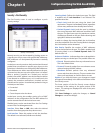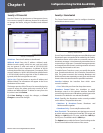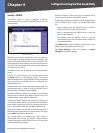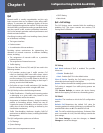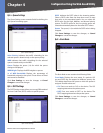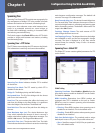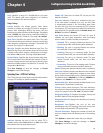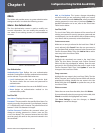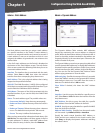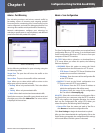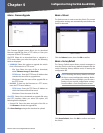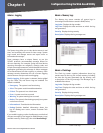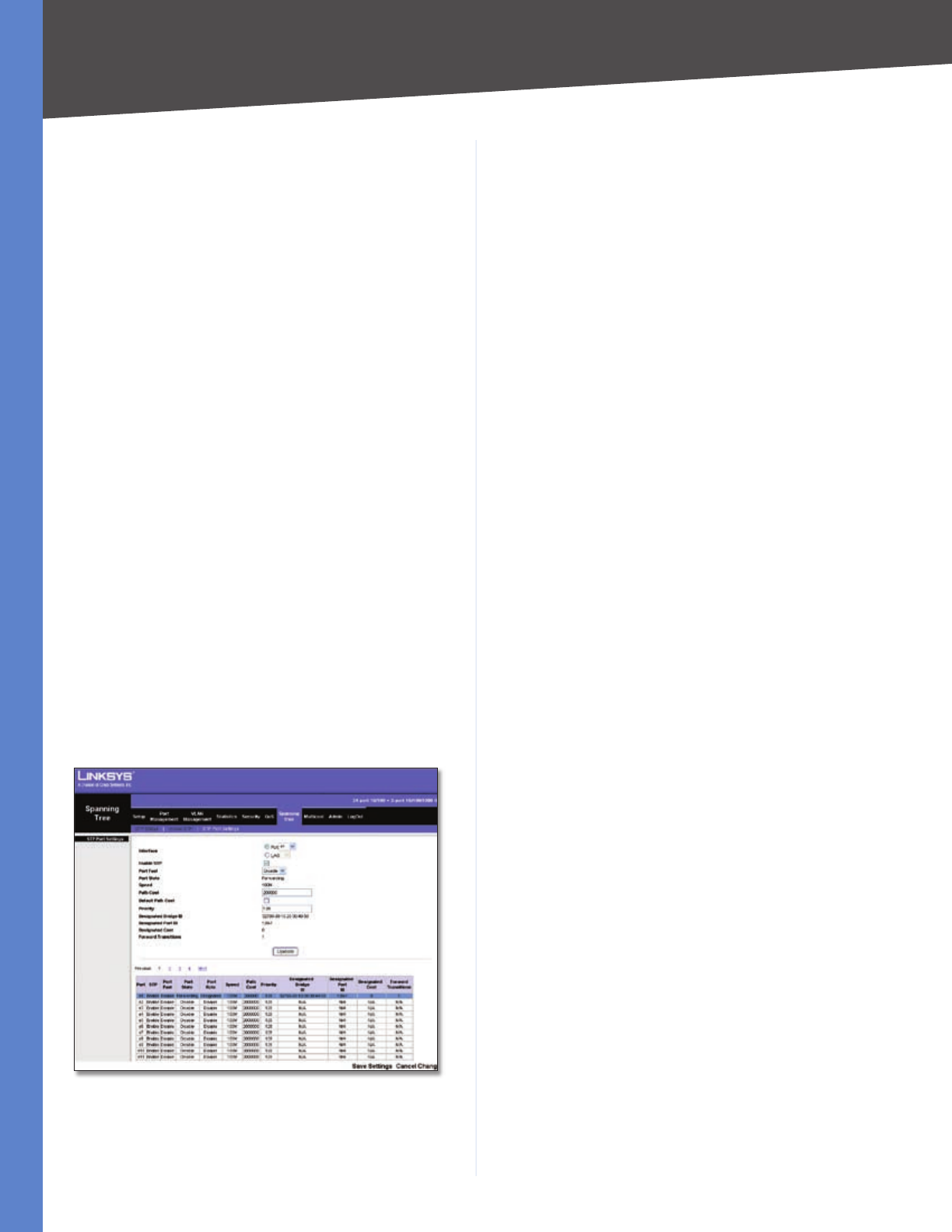
Chapter 4
Configuration Using the Web-based Utility
28
Business Series Smart Gigabit Ethernet Switch
Long Specifies a range of 1-200,000,000 for port path
costs. The default path costs assigned to an interface
varies according to the selected method.
Bridge Settings
Priority Specifies the bridge priority value. When
switches or bridges are running STP, each is assigned a
priority. After exchanging BPDUs, the device with the
lowest priority value becomes the Root Bridge. The default
value is 32768. The value must be a multiple of 4096. For
example, 4096, 8192, 12288, etc. The range is 0 to 65535.
Hello Time Specifies the device Hello Time. The Hello
Time indicates the amount of time in seconds a root bridge
waits between configuration messages. The default is 2
seconds. The range is 1 to 10 seconds.
Max Age Specifies the device Maximum Age Time. The
Maximum Age Time is the amount of time in seconds that
a bridge waits before sending configuration messages.
The default is 20 seconds. The range is 6 to 40 seconds.
Forward Delay Specifies the device forward delay time.
The Forward Delay Time indicates the amount of time in
seconds a bridge remains in a listening and learning state
before forwarding packets. The default is 15 seconds. The
range is 4 to 30 seconds.
Click Save Settings to save the changes, or Cancel
Changes to cancel the changes.
Spanning Tree > STP Port Settings
The STP Port Settings screen allows network administrators
to assign STP settings to specific interfaces.
Spanning Tree > STP Port Settings
Interface Indicates the port or LAG on which STP is
enabled. Select either Port (default) or LAG, then select
the interface from the drop-down menu.
Enable STP Select this to enable STP on the port. The
default is Enabled.
Port Fast Indicates if Fast Link is enabled on the port.
If Fast Link mode is enabled for a port, the Port State
is automatically placed in the Forwarding state when
the port link is up. Fast Link optimizes the STP protocol
convergence. STP convergence can take 30-60 seconds in
large networks. The possible values are Enable, Auto, and
Disable. The default is Disable.
Port State Displays the current STP state of a port. If
enabled, the port state determines what forwarding
action is taken on traffic. Possible port states are:
Disabled STP is currently disabled on the port. The
port forwards traffic while learning MAC addresses.
Blocking The port is currently blocked and cannot
forward traffic or learn MAC addresses.
Listening The port is in Listening mode. The port
cannot forward traffic nor can it learn MAC addresses.
Learning The port is in Learning mode. The port
cannot forward traffic, but can learn new MAC
addresses.
Forwarding The port is in Forwarding mode. The port
can forward traffic and learn new MAC addresses.
Speed Displays the speed at which the port is operating.
Path Cost Indicates the port contribution to the root path
cost. The path cost is adjusted to a higher or lower value,
and is used to forward traffic when a path being rerouted.
The default value is 2000000 for a 10M port, 200000 for a
100M port, and 20000 for a 1G port or a LAG.
Default Path Cost When selected the default path cost is
implemented. The default is unselected.
Priority Priority value of the port. This value influences
the port choice when a bridge has two ports connected in
a loop. The range of values is 0 -240. The default is 128.
Designated Bridge ID Displays the bridge priority and
the MAC Address of the designated bridge.
Designated Port ID Displays the selected port’s priority
and interface.
Designated Cost Displays the cost of the port
participating in the STP topology. Ports with a lower cost
are less likely to be blocked if STP detects loops.
Forward Transitions Displays the number of times the
port has changed from the Blocking state to Forwarding
state.
Click Update to update the screen with your changes.
Click Save Settings to save the changes, or Cancel
Changes to cancel the changes.
•
•
•
•
•





